The Santé Fe mega farm in the Rupununi operated by the Simpson family of Barbados has begun harvesting of paddy and is preparing for a significant expansion of planting.
Director of the National Agriculture Research and Extension Institute (NAREI) Dr. Oudho Homenauth and General Manager (GM) of the Guyana Rice Development Board (GRDB) Jagnarine Singh and other officials visited the farm on Tuesday, according to a release yesterday from the Government Information Agency (GINA).
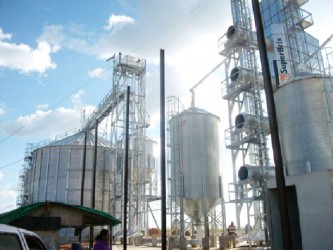
Santa Fe has declined requests by Stabroek News for an interview on its investment and all of the information thus far on it has been provided by GINA.
The first bumper crop of “dry land rice” will be processed at the nearby mill. GINA said that the first crop now being harvested is the AR Irja 424 variety which was tried and tested in Brazil.
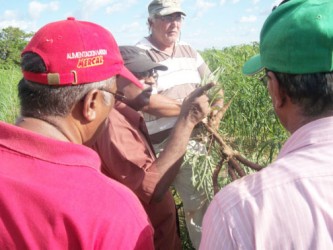
It added that given the soil type, planting this variety required greater fertiliser application which means using three times the fertiliser regimen applied on the coastland. The crop also utilises a greater use of pesticide, GINA said.
The aim of this most recent visit by the Ministry was to enable its agriculture experts to learn about the techniques being employed by the farm.
GINA said that the Santa Fe project has modelled its cultivation to mirror techniques employed in Brazil, and is using a Brazilian expert to guide the process.
Prior to the application of chemicals, mapping of the area was undertaken along with steady soil testing, to pilot planting.
“The hilly slope of the planting area made it crucial to map the topography to create terraced fields which would allow for easier irrigation… This method allows the collected water to flow from the highest step to the lowest level of the cultivation”, GINA reported.
A water lifting irrigation system is used to convey water directly from the Ireng River to the fields. GINA said that levees have been built around and through the fields to contain the water at the best depth.
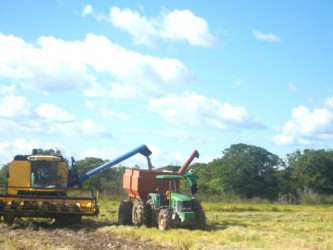
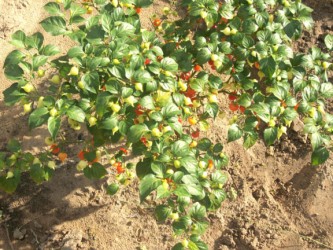
Upland rice strains have shorter growth cycles, as they mature in just over 105 days but produce 20-30% less yield than on the coast, GINA said. Of the 100 acres harvested thus far at Santa Fe, the farm has achieved nine tonnes of wet paddy per acre. This translates to about seven tonnes of dry paddy per acre, similar to on the coast.
The farm is also exploring cultivation of some fruits and vegetables as the objective is a large-scale multi-farm.
The next rice crop is expected to see about 1000 acres of rice cultivated, 980 acres more than what was planted in this first crop. During the next rainy season, the farm will get into soya bean cultivation. Also planned, GINA said, is the rearing of beef and dairy animals on 30 acres of the farmland.
It is hoped that the success of the Santa Fe venture will serve as an incentive not only to Government, but also to the large-scale private rice producers, GINA added.
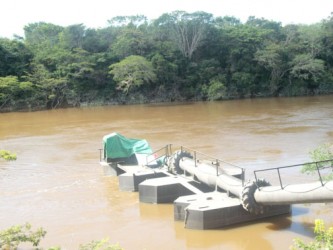
The project has been in the making since 2010. In September 2010, then Agriculture Minister Robert Persaud had said that the project at Santa Fe in the North Rupununi had seen some $156 million being spent up to that point. This year, the company stepped up the pace with the sowing of rice as it expanded its operations.
Earlier this year, it had been reported by GINA that of the 60 employees on the site, 57 are Guyanese from Region 9 and the others are Brazilian consultants.




